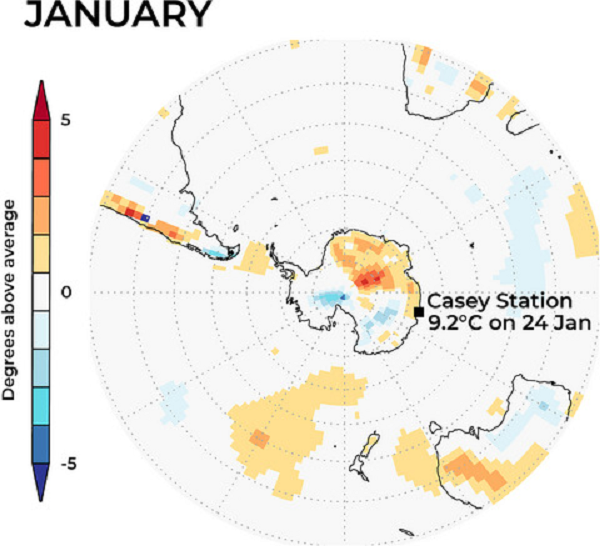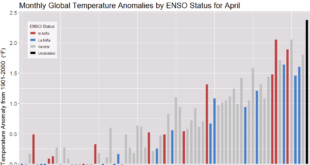From the article The 2019/2020 summer of Antarctic heatwave by Sharon A. Robinson et. e. (3/30/2020) in Global Change Biology:
Heatwaves are rarely reported in Antarctica, but elsewhere are often classified as three consecutive days with both extreme maximum and minimum temperatures. Using this classification, Casey experienced a heatwave between 23 and 26 January with minimum temperatures above zero and maximum temperatures above 7.5°C. Casey also recorded its highest maximum temperature ever (9.2°C) on 24 January followed by its highest minimum (2.5°C) the following morning.
Interestingly,
In the past, much of East Antarctica has been spared from rapid climate warming due in part to ozone depletion, which cools surface temperatures slightly and enhances the strength of the westerly wind jets which shield Antarctica from more northerly warming air (Bornman et al., 2019; Robinson & Erickson, 2015).
But,
In late 2019, stratospheric warming led to an early breakup of the ozone hole (Lewis, 2019) and Antarctic temperature records started to break (Figure 1a). In what we believe is a first, we report a heatwave event at Casey Station, East Antarctica (Figure 1b) in January, to add to the record high temperatures reported for Antarctica in February.
Impacts,
Although it is too early for full reports, this warm summer will have impacted Antarctic biology in numerous ways, probably leading to long‐term disruptions at ecosystem, community and population scales.

